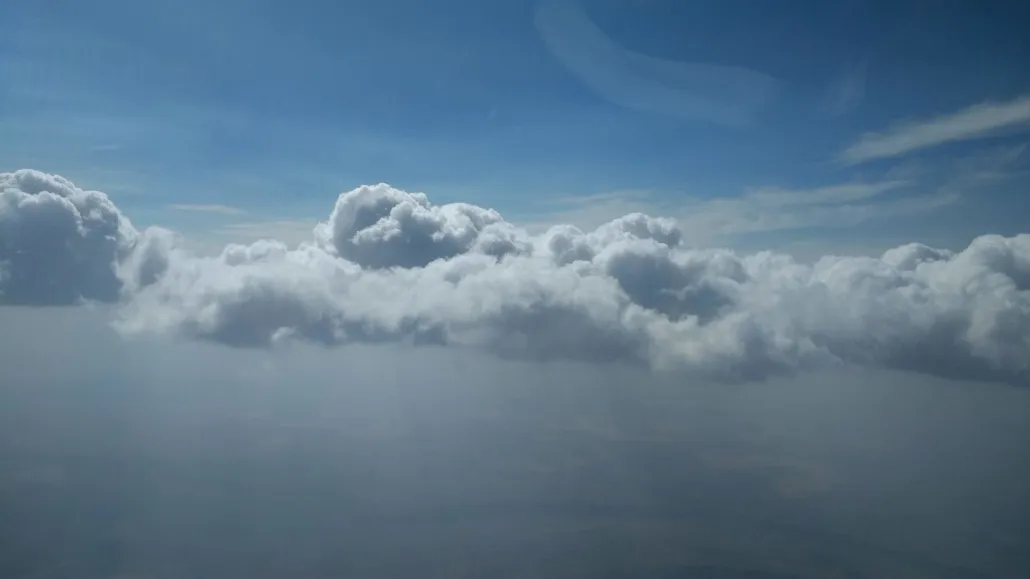
A lightning strike in Washington state’s Okanogan-Wenatchee National Forest caused the 2018 Cougar Creek wildfire, which sent smoke billowing into the clouds above (shown). These smoke-filled clouds may produce less rain, a study suggests.
Emily V. Fischer
- More than 2 years ago
When smoke rises from wildfires in the western United States, it pummels clouds with tiny airborne particles. What happens next with these clouds has been largely unstudied. But during the 2018 wildfire season, researchers embarked on a series of seven research flights, including over the Pacific Northwest, to help fill this gap.
Using airborne instruments to analyze small cumulus clouds affected by the smoke, the scientists found that these clouds contained, on average, five times as many water droplets as unaffected clouds. That in itself was not a huge surprise; it’s known that organic and inorganic particles in smoke can serve as tiny nuclei for forming droplets (SN: 12/15/20). But the sheer abundance of droplets in the affected clouds astounded the team.
Counterintuitively, those numerous droplets didn’t make the clouds more likely to produce rain. In fact, the opposite occurred. Because the droplets were about half as big as those found in a typical cloud, they were unlikely to collide and merge with enough other droplets to result in rain. The chances of rain were “virtually zero,” the researchers write in the August Geophysical Research Letters.
The new research suggests that wildfires could lead to clouds producing less rain in the U.S. West, feeding into drought conditions and potentially increasing future wildfire risk.
But the environmental dynamics involved are complex, says Cynthia Twohy. She’s a San Diego–based atmospheric scientist at NorthWest Research Associates, a research organization specializing in geophysical and space sciences headquartered in Redmond, Wash. For instance, Twohy and her colleagues found that “the ratio of light-absorbing to light-scattering particles in the smoke was somewhat lower than measured in many prior studies,” she says.
“The take-home message is that while other studies have shown wildfire smoke has an absorbing (warming) influence that can be important for cloud formation and development, these impacts may be less in the western U.S., because the smoke is not as dark,” Twohy says. The impact of the lighter smoke is still an open question. “It’s just another way that smoke-cloud interactions are a wild card in the region.”
The team used onboard probes to sample clouds affected by wildfire smoke and compare them to their more pristine counterparts. The probes measured how many cloud droplets were present in the samples, the size range of those droplets and the liquid water content of the clouds.
A special tube mounted on the exterior of the plane to collect and evaporate cloud droplets was used to “reveal the particles that the droplets were condensed on,” says Robert Yokelson, an atmospheric chemist at the University of Montana in Missoula who was not involved with the research. This process enabled the researchers to confirm what the original smoke particles were made of, a technique that Yokelson calls “neat.”
The analysis detected the amounts of carbon, oxygen, nitrogen, sulfur and potassium found in residual particles evaporated from cloud droplets. These elements were present in similar amounts to those found in smoke particles sampled from below the clouds, “implying that the cloud droplets also formed on smoke particles,” Twohy says.
Previous studies conducted in the Amazon have shown that “smoke will make the cloud droplets smaller and more numerous,” thereby reducing rainfall, Yokelson says. But this study provides robust evidence that the phenomenon isn’t isolated to the Amazon. It echoes the results of a much smaller 1974 study of smoke-filled clouds over the western United States, providing a crucial present-day snapshot of the challenges facing the region.
Wildfires in the western United States have been breaking records in recent years — increasing in number and size due to climate change — a trend that scientists think will get worse as the globe continues to warm (SN: 12/21/20). As a result, Twohy says, it’s increasingly important that researchers continue to monitor these fires’ influence on the atmosphere.






